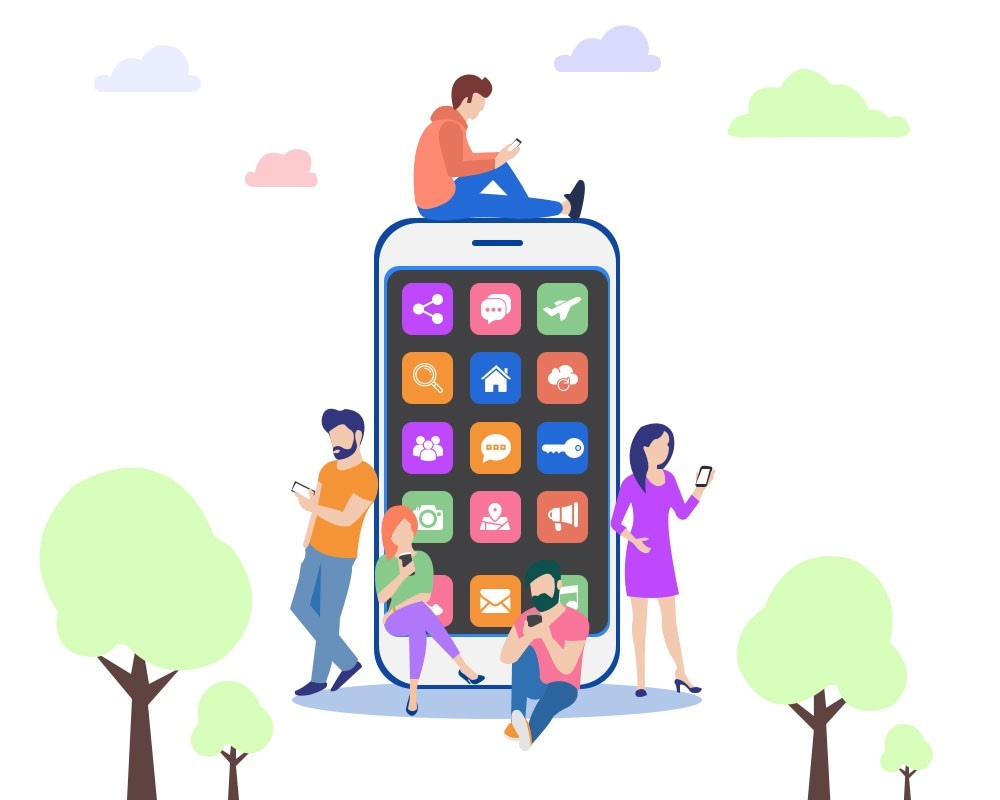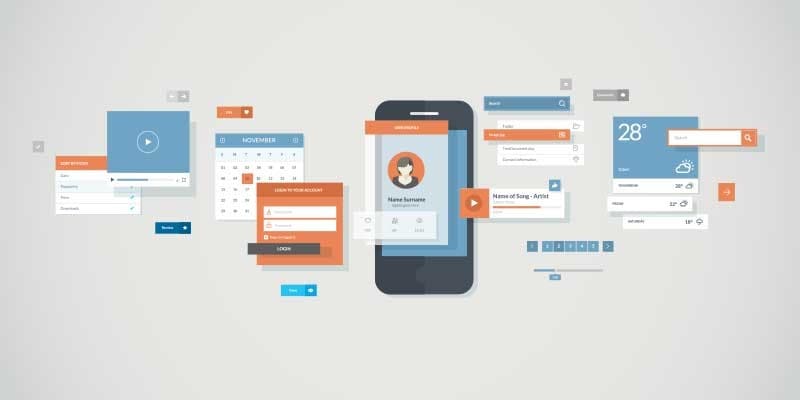Application Design in UX Discipline

Building an application is a complicated task based on various factors and considerations. From the purpose of the app design, everything needs to be accurately defined to meet the users' needs and experience. Whether it is messaging, posting, gaming, or clicking photographs, there is a mobile application design for everything.
With the competition so high and demand ever-increasing, mobile apps are entering into quite a competitive world that makes understanding the application design crucial. With the proven methods and the tested design, creating a mobile app that is effective and efficient is quick and easy.
Quite a considerable amount of time and energy has been invested in the mobile app design to make the application a perfect mix of attractiveness, utility, accessibility, and simplicity. Research suggests that users currently spend 90% of their time on apps rather than just surfing the internet.
What is Application Design? - A Brief Introduction.
The application design is the complete process of defining the application elements based on the user experience and user elements. From the idea generation to various steps involved in creating the app and launching it live, there is a range of aspects to be considered while working on android app design.
From deciding the template, look, font, design, and every single step till marketing, the various steps that are involved in defining the application design process are:
- Research
The first step in the web app design or android app design is to do complete research on various aspects. The research should be based on market demand, application design, costing, marketing idea, potential user base, and related competitors. This research will offer an insight into what kind of application design will be more fruitful and acceptable in the competitive environment.
- Ideation
The ideation is the stage where the research is brought to the paper. The idea here is to define the details of the application under consideration. Upon completing the research, a complete set of information about the expected application design can be charted down and analyzed for further work.
- Problem Identification
Problem identification is the stage of developing a hypothesis. The idea here is to describe the potential pitfalls or challenges that one might face while developing the application. Problem identification is also the point where the main aim and the point of the promotion are defined.
- Design and Develop
So, once the layout has been decided and the basic aim has been defined, it is time to develop the prospective app design. The design will be based on the platform; one will launch the application, the aim, and the content or functioning. The ios design is different from the web app design or android app design, making it important to appropriately make changes to suit the range of customers and platforms.
The visual design and the interface are also considered and selected at this stage. The development of the application based on the various factors will help to figure out the aspects to be incorporated to make the application run smoothly.
- Feedback
Once the application design is finalized and created, it is important to get feedback. Running the demo will make sure to look for the potential bugs that might be present, and the feedback of the same can help you define the changes that can make the application even more effective and efficient. Feedback makes it a point to identify the exact needs of the end-user with respect to the change of time.
- Launch and Stay Updated
The application design, when ready, can be launched to be used by the end customers. While launching the application, one needs to be sure of the UX apps to make them user-friendly and acceptable. Developing and making changes from time-to-time will help to capture the market most prominently.
An Example of Everyday Application Design.
Application design is one of the most common things that a person uses in daily life. From simple mobile applications to website applications, multiple examples can be seen and analyzed. Digitization has proved that app design is one of the key factors to reach the mass population.
One of the finest application designs with millions of satisfied users is Instagram. Everything is seamlessly designed to offer the user an experienced class apart from the login page to the feed, chat, and search option. With the highest quality user interface, the UX apps make it one of the most friendly platforms to use.
Rating based on design, usability, and creativity is quite high, based on simplicity and user-friendliness. The incredible user experience and ease are perfect for the app design. Some other examples of the application design are Myntra, Amazon, and above all, the Google App.

Common Uses for Application Design.
With the trends and evolution continuously taking place, the use of the application design has been increasing. But before understanding the uses, it is important to know the tips that will make the application design more acceptable and friendly.
- Incorporate creative gestures for easy use that allow the users to make an easy selection, thus facilitating friendly feedback.
- Make the design linked to the purpose. As for gaming, the app should be interactive and creative, while the app for messaging should be simple and straightforward.
- Add the feature of journey mapping for the user flow to make the UX apps.
- Incorporate the micro and mini interactions to make the application platform happening.
- Simple navigation will make the customer attracted. Adding a few animation features will help the customer feel connected.
Based on the tips, the major uses of the app design are:
- In designing the learning and educational websites and applications.
- For designing the gaming apps that offer recreation and fun to the users
- To make the chatting and messaging applications friendlier and easy
- To enhance the fun of shopping by making the app design straightforward
- To develop the modern web design app for a greater user experience.
The key to making the application design user-friendly is to build it based on the expectations of users rather than adding enormous features that can complicate it.
The relationships between Application Design and UX.
A perfect application design offers a positive user experience. One can explain the relationship between the application design and UX with the help of factors below:
- Application design offers the resources and the platform to interact and connect with the customers.
- The use of mobile app design creates a more personalized and customized approach that encourages the customer to have increased and frequent visits to the platform.
- The web app design offers fresh and up-to-date utility features to the users enabling them to make informed decisions and a better experience.
- Using UX apps, the brands create positive experiences for the customers and build a base of loyal customers.
- When the user experience is enhanced, transforming the potential users in engaging customers is quite high.
Conclusion
Planning, designing, developing, testing, and launching a mobile app design is a task that involves the use of time, resources, tools, and the right expertise. One of the most dominant technological features, the application design, offers a handy platform to all the users to interact and avail themselves a range of services.
Although app design is not an easy or fast process that helps design and solve problems quickly. Consider every small aspect that makes the app design-friendly and constantly engaging. A high-quality application that is attractive, intuitive, and represents the theme perfectly, is the UX apps' uniqueness.

